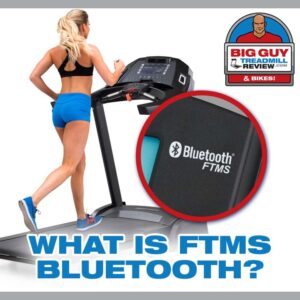The Question That Could Save Your HIIT Workouts
Want to do interval training on a treadmill? Here’s the question nobody’s asking: How long does it take for your treadmill to actually get to speed?
We tested 24 treadmills, and some take up to 45 seconds just to go from 2 mph to 8 mph. Think about that—45 seconds of waiting during every interval. That’s not high-intensity training; that’s high-patience training.
At Big Guy Treadmill Review, our 298-pound tester discovered that acceleration time might be the most important spec that manufacturers don’t want to talk about. Here’s what we found when we asked the right questions.
Why Acceleration Time Kills Your Interval Training
The HIIT Training Reality Check
High-Intensity Interval Training requires quick transitions between speeds. You sprint, you recover, you sprint again. But what happens when your treadmill can’t keep up?
Real example: The OMA 6134EAI takes 31.2 seconds to go from 2 mph to 8 mph. If you’re doing 30-second sprint intervals, you’ll spend more time waiting for the treadmill than actually sprinting. The workout becomes a joke.
Compare that to the Peloton Tread 3500 at 10 seconds, or the Horizon 7.8 AT at 9.7 seconds. That’s the difference between an effective workout and wasting your time.
Quick acceleration helps maintain the desired intensity during high-intensity intervals, ensuring your heart rate spikes quickly—crucial for burning calories and improving cardiovascular fitness.
The Questions You Should Be Asking
- How long does it take to go from walking to running speed?
- Can the treadmill handle quick speed changes for intervals?
- Will the motor lag when I need intensity?
- Does the acceleration change when I’m actually on it versus empty?
The Speed Formula That Actually Matters
Understanding Speed-to-Time Ratios
Here’s something interesting: 3G Cardio treadmills have approximately a 1:1.15 ratio—for each 1 mph increase, it takes about 1.15 seconds to reach that speed. So going from 2 mph to 8 mph (6 mph increase) takes roughly:
3G Cardio Formula: 6 mph × 1.15 seconds = 6.9 seconds baseline + acceleration curve = ~11-12.5 seconds total
And our testing proves it:
- 3G Cardio Pro Runner X: 11.0 seconds (2-8 mph)
- 3G Cardio Elite Runner X: 12.5 seconds (2-8 mph)
This predictable performance is what you want for interval training—consistent, reliable speed changes you can count on.
The Acceleration Test Results: Who Can Handle HIIT?
HIIT-Ready Treadmills (Under 15 Seconds)
These treadmills can actually handle interval training:
- Horizon Fitness 7.8 AT: 9.7 seconds ($1,999)
- Peloton Tread 3500: 10.0 seconds ($2,999)
- 3G Cardio Pro Runner X: 11.0 seconds ($2,299)
- Horizon Fitness 7.0 AT: 11.7 seconds ($999)
- Echelon Stride: 12.0 seconds ($1,299)
- 3G Cardio Elite Runner X: 12.5 seconds ($4,250)
- NordicTrack 2450 Commercial: 12.5 seconds ($2,799)
- NordicTrack Commercial 1750 (2024): 13.5 seconds ($1,999)
- Life Fitness Club Series Plus: 13.5 seconds ($7,869)
- NordicTrack 1750 (2023): 14.0 seconds ($1,599)
- Horizon T101: 14.5 seconds ($699)
- ProForm Pro 2000: 14.5 seconds ($1,499)
Interval Training Strugglers (15-20 Seconds)
These will make your HIIT workouts frustrating:
- Life Fitness Club 95T: 15.0 seconds ($7,890)
- Sole F80 (2024): 15.0 seconds ($1,799)
- Life Fitness T5: 16.8 seconds ($5,249)
- Life Fitness F3: 17.5 seconds ($3,399)
- Bowflex T10: 18.0 seconds ($1,999)
- Spirit XT685: 18.5 seconds ($2,999)
HIIT Workout Killers (Over 20 Seconds)
Forget about interval training on these:
- Sole F80: 22.0 seconds ($1,899)
- Inspire Fitness Tread 3: 25.0 seconds ($1,299)
- Life Fitness T3 Track Connect: 27.0 seconds ($3,999)
- OMA 6134EAI: 31.2 seconds ($1,899)
- 3G Cardio 80i Fold Flat: 38.0 seconds (Discontinued)
That OMA taking 31 seconds? Your rest period will be over before you hit your sprint speed. The 3G Cardio 80i at 38 seconds? No wonder it was discontinued.
The Questions About Speed Accuracy Nobody Asks
Does Your Treadmill Lie About Speed?
Here’s another question you should ask: When the display says 6 mph, are you actually running at 6 mph?
We tested every treadmill at 6 mph with no load, then with 270 pounds. Some maintained perfect accuracy. Others? Not so much:
- Horizon T101: Says 6 mph, actually 5.82 mph with load (97% accurate)
- NordicTrack 1750 (2023): Says 6 mph, actually 5.54 mph with load (92.3% accurate)
- ProForm Pro 2000: Says 6 mph, actually 5.78 mph with load (96.3% accurate)
If you’re training for a race or tracking calories, that speed difference matters. You think you’re running 6-minute miles in training, but you’re actually running 6:15s. Come race day, you’ll wonder why you’re struggling.
The Load Test Question
Ask this: “How does the treadmill perform with my actual weight on it?”
Champions that maintain speed under load:
- Spirit XT685: 6.00 mph empty → 5.99 mph at 270 lbs (99.8% accurate)
- Peloton Tread 3500: 6.06 mph → 6.05 mph (99.8% accurate)
- Life Fitness T5: 6.11 mph → 6.03 mph (98.7% accurate)
Why This Matters for Your Body
Beyond the frustration factor, slow acceleration actually reduces the physiological benefits of interval training:
- Heart Rate Zones: Quick acceleration keeps your heart rate fluctuating between high and low zones—key to interval training effectiveness
- Caloric Burn: Faster acceleration means more time in the calorie-torching zone during and after your workout
- Muscular Adaptation: Rapid transitions ensure muscles are constantly challenged, improving power generation and endurance
- Mental Engagement: Quick transitions add excitement and variety, preventing boredom and maintaining focus
What the Motor Numbers Really Mean for Intervals
The Horsepower Question That Matters
Everyone asks about horsepower, but here’s the real question: Does more horsepower mean faster acceleration?
Our testing says no:
- Echelon Stride (1.75 HP): 12.0 second acceleration
- Spirit XT685 (4.0 HP): 18.5 second acceleration
- Life Fitness Club 95T (4.0 HP): 15.0 second acceleration
The little Echelon with 1.75 HP beats both 4.0 HP machines in acceleration. Why? Because motor control and programming matter more than raw power for speed changes.
The Big Guy’s Guide to Asking the Right Questions
Before You Buy, Ask These Questions
For HIIT and Interval Training:
- What’s the acceleration time from 2 to 8 mph?
- Can I see a video of the speed changes?
- Has anyone tested this with real interval workouts?
- What’s the speed-to-time ratio for acceleration?
For Larger Users (250+ pounds):
- How does speed accuracy change with my weight on it?
- What’s the RPM at standard speeds?
- Has this been tested with users my size?
- What’s the actual weight capacity vs. marketing claims?
For Long-Term Performance:
- Is this DC or AC motor, and why does it matter for my use?
- What’s the warranty on the motor specifically?
- How does performance change over time?
- Can the control board be updated for better performance?
The Recommendations Based on the Right Questions
Best for HIIT Interval Training
If quick speed changes are your priority:
Performance Champion: Horizon 7.8 AT ($1,999)
– 9.7 second acceleration (fastest we tested)
– FTMS Bluetooth for app control
– Solid speed accuracy
Smart Money: 3G Cardio Pro Runner X ($2,299)
– 11.0 second acceleration
– Predictable 1:1.15 speed ratio
– FreeSync FTMS Bluetooth
Budget HIIT: Horizon 7.0 AT ($999)
– 11.7 second acceleration
– FTMS Bluetooth included
– Best under $1,000 for intervals
Best for Heavy Users Who Want Speed
If you’re 250+ pounds and need responsive performance:
No-Compromise Option: Life Fitness T5 ($5,249)
– Commercial-grade accuracy
– Minimal speed loss under load
– Built for continuous heavy use
Value Performance: 3G Cardio Elite Runner X ($4,250)
– 12.5 second acceleration
– 4.0 HP motor
– Maintains good speed under load
What to Avoid for Interval Training
Based on our testing, skip these if HIIT is your goal:
- Any treadmill over 20 seconds acceleration time
- Models with 5%+ speed loss under load
- Treadmills without interval program capability
- Anything that doesn’t list acceleration specs
The Bottom Line: Ask First, Buy Once
After testing 24 treadmills with a 298-pound user, here’s what we learned: The questions manufacturers don’t want you to ask are exactly the ones that matter most.
Acceleration time from 2 to 8 mph? That’s your HIIT workout quality right there. Speed accuracy under load? That’s your actual training pace. Motor type and control? That’s whether your intervals will be smooth or frustrating.
Don’t let marketing specs fool you. Ask about acceleration time. Ask about speed under load. Ask about real-world interval performance. Because the difference between a 10-second acceleration and a 30-second acceleration isn’t just numbers—it’s the difference between a workout that works and one that doesn’t.
For a complete look at all our treadmill performance rankings and detailed comparisons, visit our comprehensive comparison chart.
The data doesn’t lie, the scale doesn’t lie, and neither do we.
Start asking the right questions. Your workouts depend on it.

Want More Reviews or a Specific Product Reviewed?
Check out more unbiased reviews, comparison charts, and expert insights from Big Mike and his team.
Email us: support@bigguytreadmill.com
Interested in a forum here? Let us know via email!

